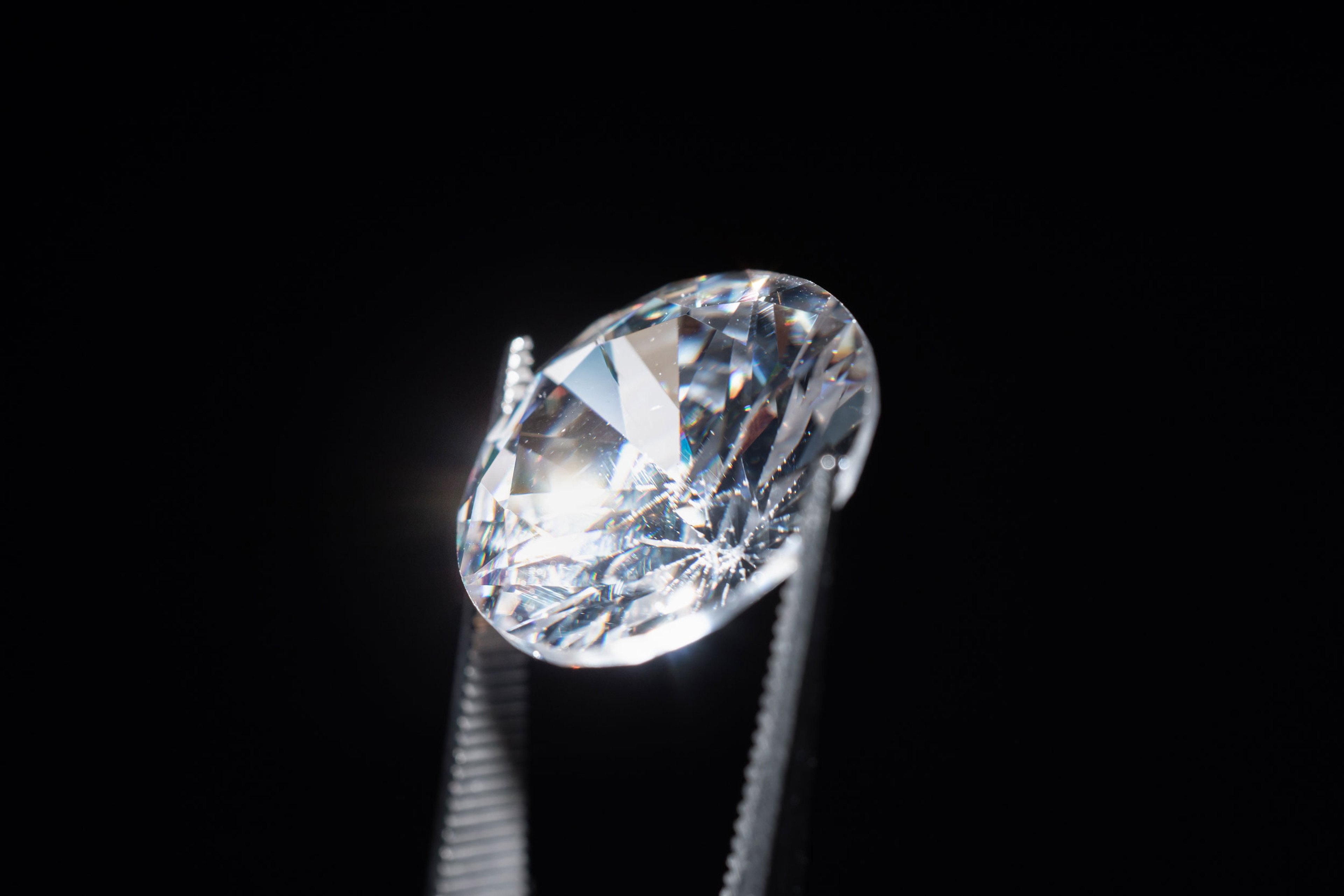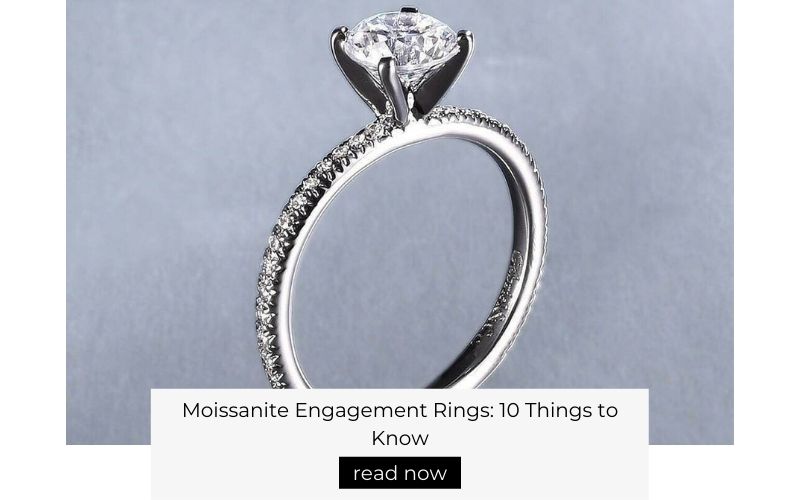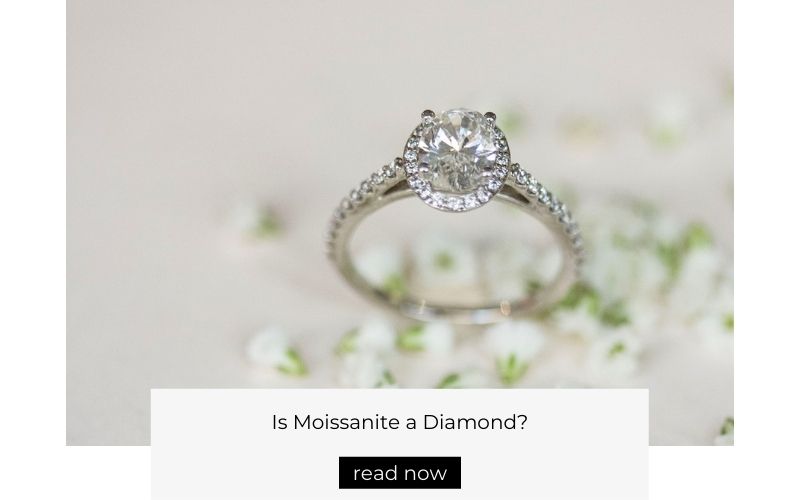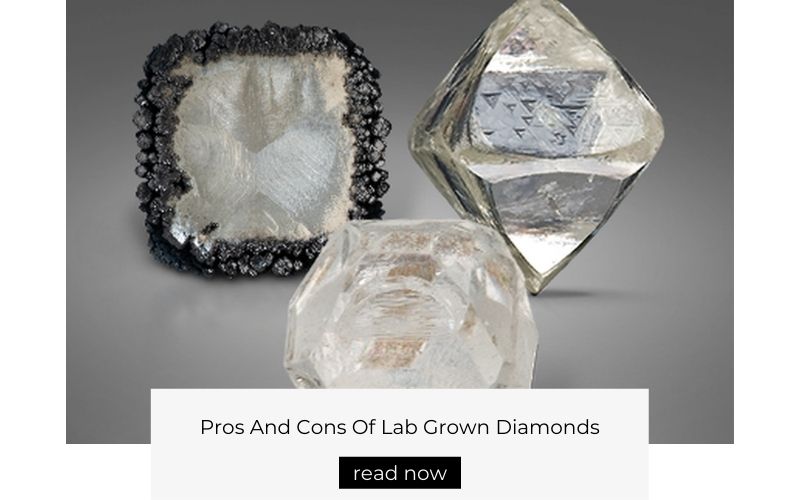Does your partner become enchanted whenever they see a sparkly diamond? Do you cringe each time because a natural or lab-grown diamond is out of your price range? Don’t sweat! When it comes to engagement rings, there are several options to consider, including diamond alternatives, like moissanite and cubic zirconia.
Which is better for the perfect proposal you’re planning? Learn more about these popular diamond simulants!
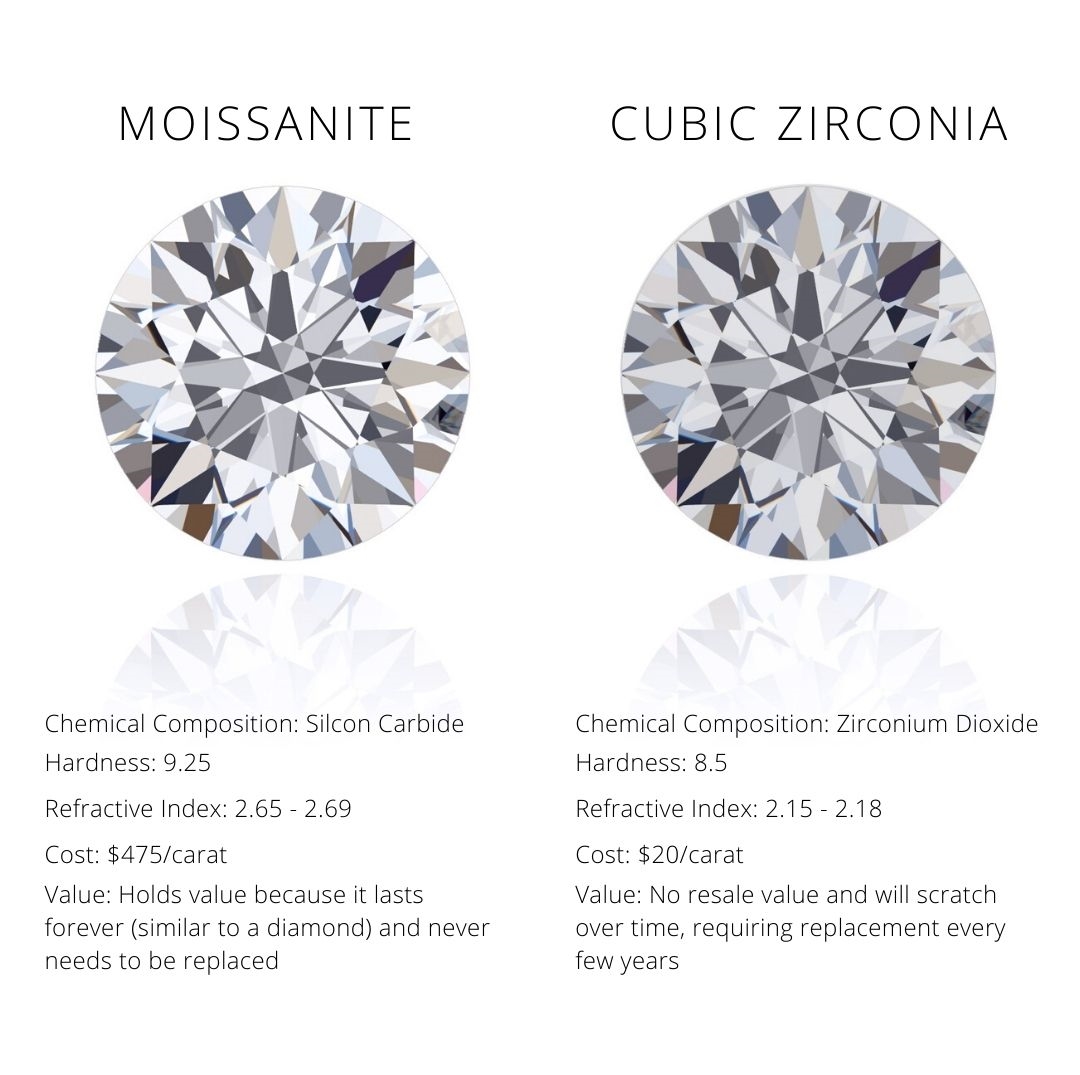
History
Moissanite: Want a stone that’s said to be born from the stars? If so, turn your attention to moissanite! This gem’s starry connection is due to silicon carbide, the key chemical compound in moissanite. Nobel Prize-winning chemist Dr. Henri Moissan first discovered silicon carbide crystals in an Arizona meteorite crater nearly 130 years ago. He initially thought they were diamonds, given their similar appearance.
However, silicon carbide is rare, and these crystal pieces were too small to form gemstones. Throughout history, scientists worked to create a thermal growing process, which allows silicon carbide and moissanite to be produced in laboratories. More than 25 years ago, jewelry company Charles & Colvard refined moissanite, making it gemstone quality. And by the late 1990s, colorless moissanite became a popular choice for engagement rings.
Cubic Zirconia: This gem is also colorless and rare in its natural form. Therefore, cubic zirconia that you see today is mass-produced in laboratories. But this stone wasn’t always used in jewelry. Scientists once experimented with using cubic zirconia in lasers! During the 1970s, Russian scientists improved the procedure for growing these crystals in a laboratory, and they were applied to rings, necklaces, earrings and more.
Chemical Composition
Moissanite: As you know by now, moissanite is made of silicon carbide. But what does that actually mean? To put it simply, that means silicon and carbon are part of moissanite’s chemical structure, making moissanite a very durable and scratch-resistant gem. In fact, it scores a 9.25 on the Mohs Hardness Scale — a scale that ranks the durability of diamonds, gemstones and other minerals. For reference, diamonds, which are also made of carbon, score a perfect 10 and are the only gemstones that surpass moissanite in strength.
Cubic Zirconia: Unlike moissanite, cubic zirconia is composed of zirconium dioxide. Scientists create the stone by melting zirconium oxide powder at nearly 5,000 degrees Fahrenheit with other chemical elements and minerals, such as magnesium and calcium. Cube-shaped crystals begin to form once the mixture is removed from the hours-long heating process. Hint: That’s how the gem gets its name.
With this structure, cubic zirconia only scores an 8.5 on the Mohs Hardness Scale. That means it’s less durable and more likely to scratch than moissanite. Jewelry experts even warn that dust around the house could scuff up cubic zirconia!
How Are They Graded?
Moissanite: If you started researching engagement rings, you have probably seen that diamonds go through a strict grading process. But moissanites are only rated on color, and they follow a different color grading scale than diamonds. These stones can be grouped into one of three categories: colorless (D-E-F range), near colorless (G-H-I range) and faint hues of color (J-K range).
Cubic Zirconia: According to the International Gem Society (IGS), you might see cubic zirconia grades at certain jewelry stores, such as A, 1A, AAA, AAAAA or 5A. As you may have guessed, AAAAA is supposed to represent the highest quality gems, while A indicates the lowest quality. But the IGS warns that a standard grading system for cubic zirconia doesn’t exist. Therefore, these “ratings” are simply marketing tactics used by retailers. Since cubic zirconia is grown in laboratories and mass-produced, there is already consistency in the stones’ quality.
Interaction with Light
Moissanite: If your partner loves a diamond’s shimmer, moissanite takes things to another level. Moissanite actually reflects light better than diamonds, so you’ll see more colored sparkle (aka fire) with these stones! They score between 2.65 and 2.69 on the brilliance refractive index and receive a rating of 0.104 when it comes to fire dispersion. For comparison, diamonds only receive ratings of 2.42 on the refractive index and 0.044 for fire dispersion.
Cubic Zirconia: This stone may look big and bright at first glance, but cubic zirconia’s sparkle is nowhere near as dazzling as moissanite’s glow. That’s because light moves differently through the stones, and cubic zirconia ultimately reflects less light back to your eye. It ranks lower than both moissanite and diamonds on the brilliance refractive index, only scoring between 2.15 and 2.18. And while the gem does offer a rainbow effect due to its fire dispersion rating (0.058–0.066), this ranking is still lower than moissanite.
Value
Moissanite: No need to cringe each time you see the price of a diamond. Moissanite often costs 70% less than natural diamonds! Just another reason to love this gemstone!
Cubic Zirconia: This gem is even cheaper than diamonds and moissanite. According to IGS, you’ll typically find one-carat cubic zirconia stones priced at about $20, while similar-sized diamonds start around $1,800. A $20 gem might sound appealing, but cubic zirconia has no resale value. And since it doesn’t have a long life span, it can’t be passed down to future generations.
If you’re looking for an affordable and durable engagement ring that provides maximum sparkle, we’d say moissanite is the clear winner here. So, rest easy and start ring shopping today!Related Articles
Have a question? We can help!
Gage Diamonds is Chicago's premier jewelry showroom and online retailer of engagement rings, wedding bands, and fine jewelry. We offer a selection of dazzling Gage Select and Charles & Colvard moissanite rings.
We’re committed to helping you find the ring of your dreams. For inspiration, browse our website or set up an appointment with a member of our trusted staff at our in-person showroom.
We offer no-credit-needed financing – apply and get your approval within 24 hours!
Pay over time, because love shouldn’t wait.
